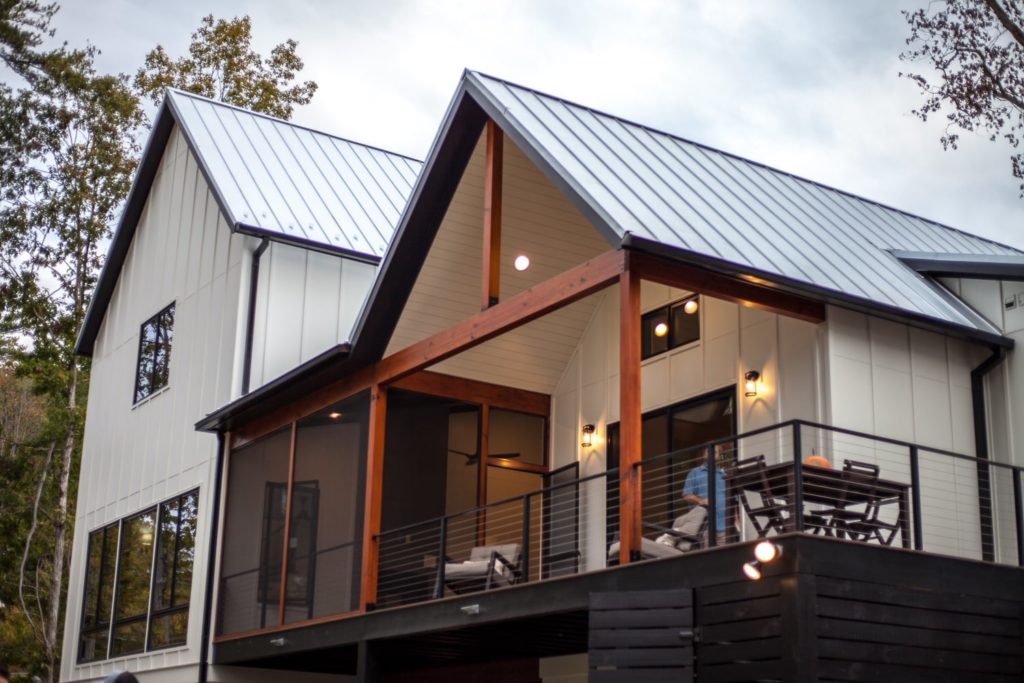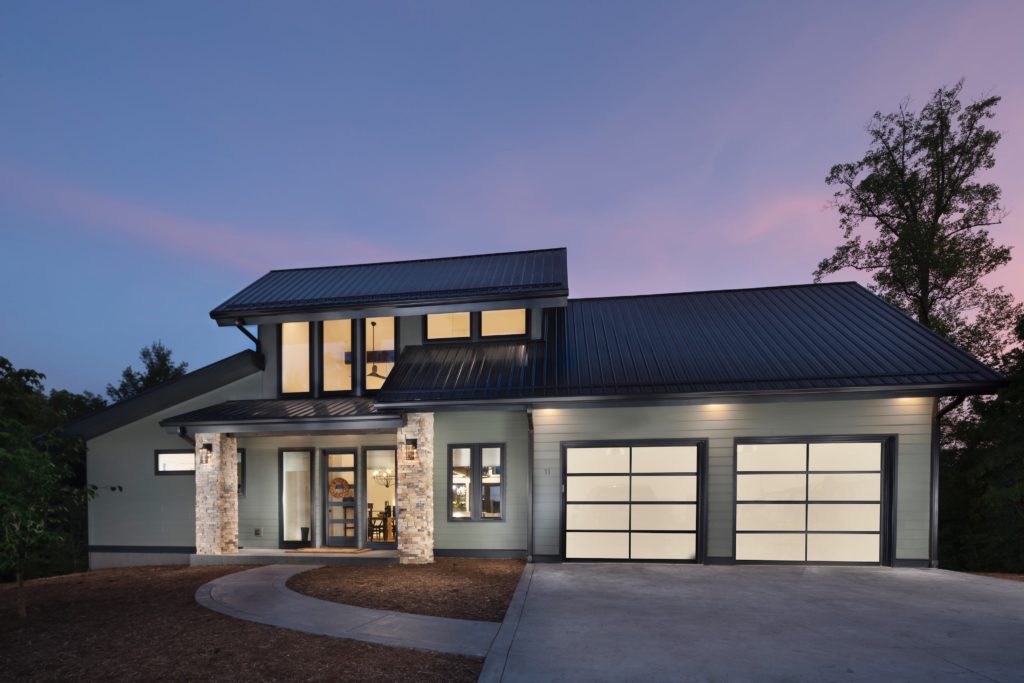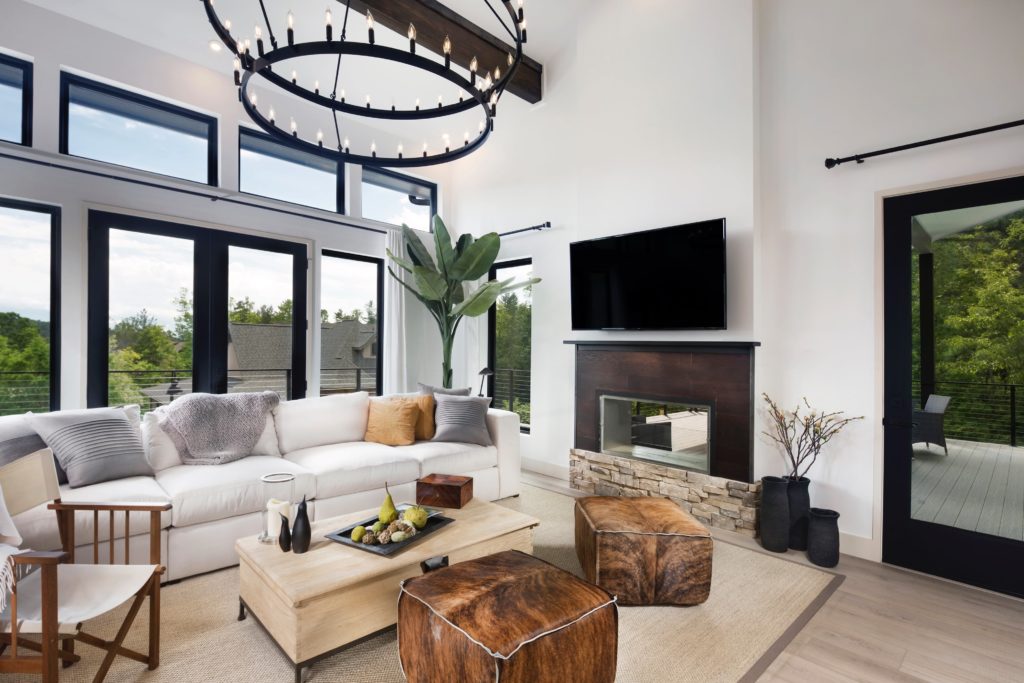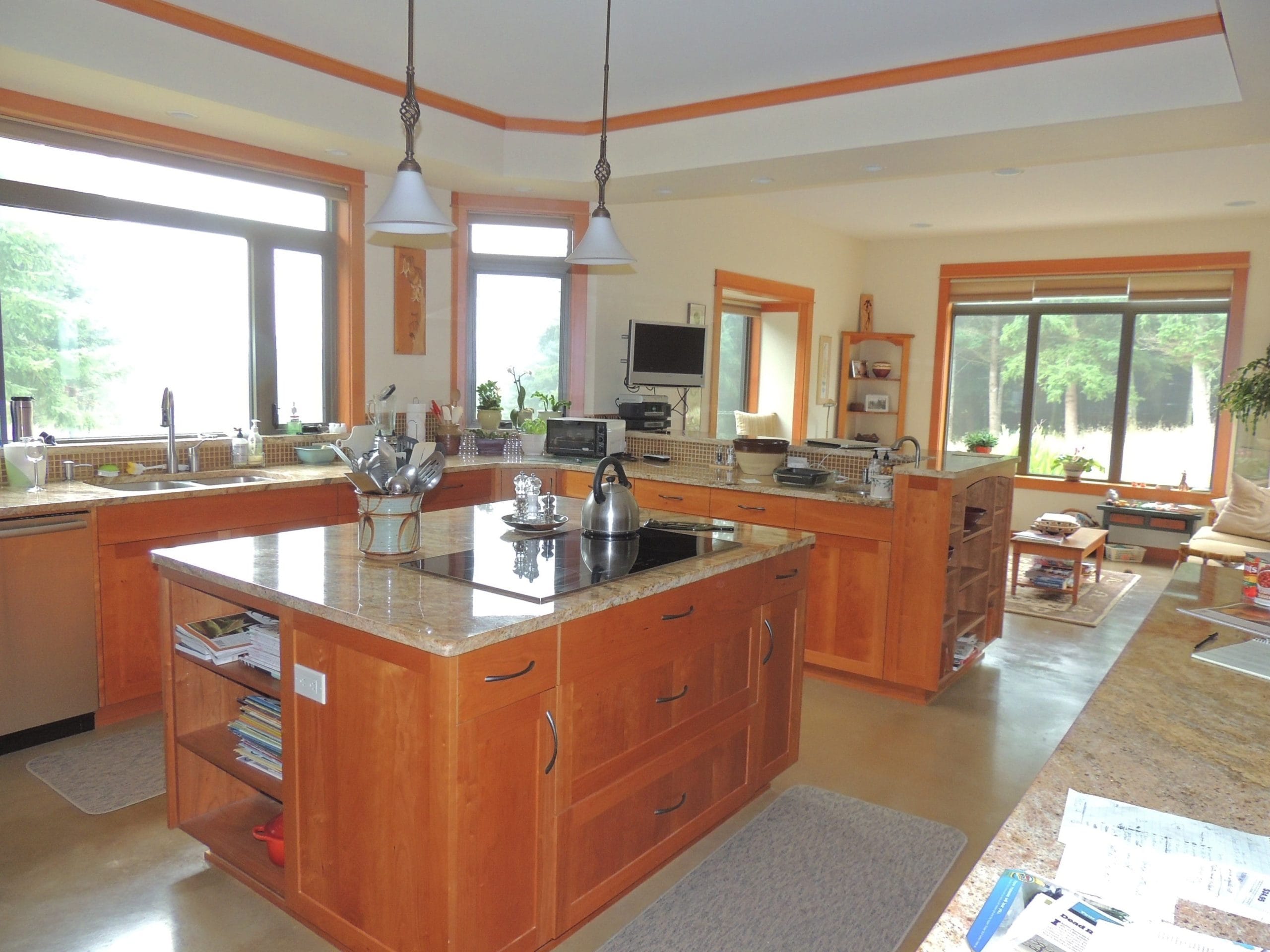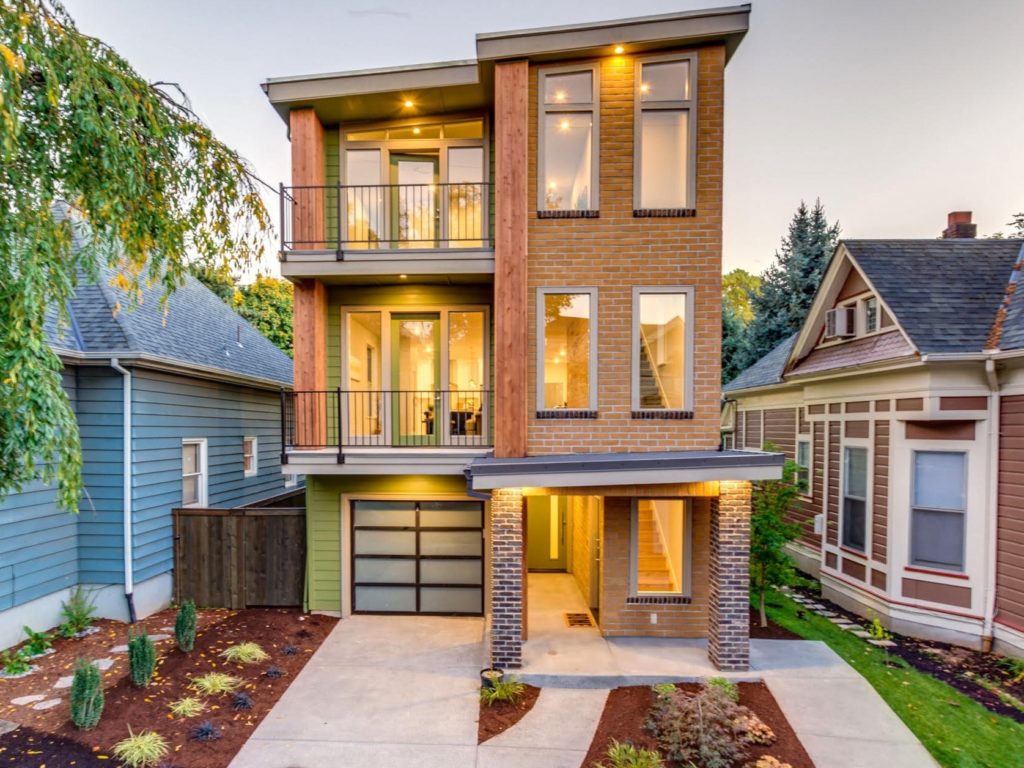These single-family builders have embraced high-performance construction as the core of their business models, all in different ways, but all with great success. We talked to them about what’s working and why.
Meet our builders, and their approaches:

Brandon Bryant of Red Tree Builders – Building the right home for the land and the client in North Carolina

Ted Clifton of Clifton View Homes (CVH Inc.) and Zero-Energy Home Plans – Designing and building the best homes he can in Washington state and all over the country

Troy Johns of Urban NW Homes – Building healthy, comfortable homes and letting everything else fall into place in Washington state
NAHB: What is your 1-minute elevator speech on your firm and building philosophy?
Brandon: Our building philosophy is “artfully crafted, mindfully built.” We ask questions like, “How will a future resident live in the house?” and “What does the land tell us about how to build this house?” That is the mindful part. Then, we artfully use the resources we have to finish the job to the highest quality. A great design will last over time, and that also makes the home more sustainable.
Ted: We are all about net-zero energy homes, building on and around Whidbey Island in Washington state. We also have a design company, providing designs for net-zero energy homes all over the country and in every climate zone.
Troy: Our philosophy is that every customer no matter what price point deserves a healthy green home. Our main focus is to build our customers healthy and comfortable homes, and the rest—like energy efficiency—falls into place from there.
NAHB: What inspired you to build the way you do?
Brandon: I was working for a developer whose builders were doing custom homes, but no one was talking about a higher level of building, and certainly not green or even energy-efficient. In about 2005, I started researching, and seeing what was on the horizon. I decided I could provide a better client experience and took that as my starting point.
Ted: From when I was a kid, I wanted to design and build houses. I went into the construction industry and did everything at a journeyman level that you would ever do in residential construction. At some point, I realized, “Gosh, I should just be a contractor.” I went to the NAHB National Green Building Conference in Albuquerque, New Mexico in ‘06 and took the green building course. I realized that because of my experience, I knew more about how to integrate the entire house as a functioning unit than most of the people there, and I owed it to my industry to push out that knowledge.
Troy: We had some health issues in our family. Once, on vacation, they cleared up. At first, we thought it was the climate and considered moving, but then we pinpointed that it was the building we were staying in, not the climate. We started researching how to build a home with better indoor air quality. From there, I also learned about other aspects of sustainable building; the rest is history.
NAHB: What design strategy is a ‘must do’ for your homes?
Brandon: First is building with the land. I like to say to each of our clients that the land will tell us what to do. I’ll take multiple trips out to the site to decide if and how we should build there. Then it’s designing to fit the client’s lifestyle. Our number one question is: “In 18 months, we’re sitting in your living room. What’s the first thing you do when you wake up in the morning? Do you go get a cup of coffee and sit on the porch?” For me, how your house feels is as important as how it looks.
Ted: Getting the load down in the house as much as possible and knowing what the heat transfer is through the systems. This includes designing a tight building envelope, insulating the slab and properly modeling the energy transfer from the building materials in the home. For example: doorknobs. I model the heat transfer through the door stock and have found that the loss is equivalent to taking two-thirds of the insulation out of a fiberglass foam core door. That level of detail helps us build the best house we can.
Troy: Focusing on a tight building envelope, which is key for two reasons: energy efficiency, of course, but also to protect the home owner in terms of indoor air quality. We work to keep the naturally-occurring gases from under the home out as well as being mindful of the materials we put into the home.
NAHB: What three words would you use to describe your homes?
Brandon: Comfortable. Healthy. Durable.
Ted: Excellent. Necessary. Futuristic.
Troy: Comfortable. Healthy. Thoughtful.
NAHB: How do you market high performance? What resonates in conversations with your customers?
Brandon: We are selling our homes in other ways; the high-performance is just baked in. But we have been doing a bunch of YouTube videos lately on how to live in a high-performance home. We are finding many people don’t know how to do that. It would be just like if I gave you a Tesla right now without the manual. You might be able to get it started and even drive it, but you probably wouldn’t be doing what you should be doing for it to run it like it was designed.
Ted: We talk about zero-energy and healthy homes. For a while, I was taking for granted so much of what we were doing for healthy living that I wasn’t talking about it enough. People would ask me, “What are you doing for indoor air quality?” So, now I’m trying to include more of that in the conversation.
Troy: Every buyer is different. It’s finding their hot button. When a client walks in the door, I will skim over ‘Here’s what a green home is, my four pillars of green – energy, sustainability, durability, and a healthy home.’ They usually say, “Yes, this right here is what is important to me.” Then we will go with that and go just a bit deeper. But you can scare them away if you talk too much green.
NAHB: When you were starting out, what were the hardest things to get good at?
Brandon: I was focusing on doing one green thing at a time. I learned that successful green building requires a holistic approach, not a spot approach, and I learned to design my homes as systems.
Ted: This is a funny thing to say, but I was surprised at how easy it was to make the jump to net-zero. We were doing almost everything we needed to in our energy-efficient homes. We just needed to do what we were doing a little bit better and start digging into the nuances of what really makes a home perform well.
Troy: All of it! But the hardest part was getting tradespeople to learn a new way and change how they were building. It was a shift and a leap of faith.
NAHB: What advice would you have for builders looking to start building more sustainably?
Brandon: Just go for it. Learn by doing; I tried to learn everything before I did it. Don’t be afraid to jump in; there are plenty of resources out there to help you succeed.
Ted: Learn how to build with structural insulated panels (SIP) and insulated concrete forms (ICF). If you fail to learn to use the best available science, you will fail to build the best available homes.
Troy: You can build a high-performance house, but that doesn’t mean it’s going to appraise as such. Make sure you’ve got the right appraiser on board. If you are a small builder just starting out, having one home appraisal not reflecting that added value could sink you.
NAHB: What are the biggest trends you see coming in high-performance building?
Brandon: Developing prescriptive paths for building, ways to accomplish high-performance targets at all price points in the residential industry – taking building science to the masses.
Ted: I am hoping to see some of the practices we use get adopted by the greater building community. I also think we will see a dramatic shift to electric cars over the next few years, which will require much more thought about how and when we charge them at our homes.
Troy: Cutting waste. There’s no recycling market right now. We need to figure out to minimize waste or how not to produce it at all. There’s durability, then there’s excessive durability, such as a countertop that lasts for 1,000 years, but in 25 years it will be outdated. It can’t be recycled, so it will likely go to the landfill. I think some of those products will fall out of favor.
NAHB: What’s next for you and your firm?
Brandon: Green building typically is a custom market; we want to bring it more mainstream. We aim to start building 20 to 30 homes a year with a semi-custom business model. We use pre-selected finishes that are in line with building science principles but are also very stylish and have a custom feel, but not a custom price point. We are also working to debut a line of zero-energy ready homes certified through the DOE ZERH program.
Ted: We are pretty-well established in our building model, using SIPS and ICFs as our principal building blocks, but are always looking for something better if it should come along.
Troy: We are looking at doing a small community of six houses using a different way of building. It will be our guinea pig to really allow us to dive deep, see how they do, and what we like or don’t like. Stay tuned!
Header image credit: Jerud Martin, Urban NW

